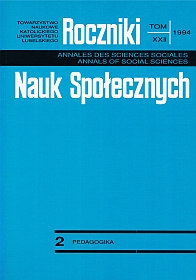Forsaken Children in Rome and its Surroundings in the 18th Century
Abstract
The main purpose of the hospital of the Holy Ghost, founded in 1198 and run by Spirituals, was to take care about the forsaken children who were born out of wedlock. Practically they often cared also about children from poor families. In the seventeenth and eighteenth centuries ca 500-1000 newborns were abandoned at the hospital. The political and social situation in the Church State as well as disasters, which often occurred, had a large bearing on the course and increase of the phenomena of abandoning children.
The main source of enlisting foundlings were villages and localities placed within 100 km from Rome, especially north of Rome. As a rule, people abandoned infants at the age of a couple or dozen days or so. The structure and internal layout of the hospital and poor-house were designed in such a way so that it could warrant total discretion for those who abandoned children. People brought foundlings to the poor-house at night or at dark, which provided anonymity for those who left their children. Having being admitted, the babies were then marked with the sign of a double cross, which was the symbol of the Holy Ghost’s hospital. Then they were handed over to the nurses in charge.
Abandoning one’s children at the poor-house did not always mean their long-term stay at this institution. The hospital staff sought to give them, as soon as possible, to living in Rome or other places who could feed them and bring them up. Those women who wanted to be nurses in the poor-house, as well as in their own houses, the hospital would put some very rigorous conditions as to both their health, their moral and ethical attitude and their religious life. The children taken from the hospital to be fed and brought up, after a period of stay in the houses of their guardians, had to be unconditionally brought back to the hospital at the age of 11 (girls) or 12.
Copyright (c) 1994 Roczniki Nauk Społecznych

This work is licensed under a Creative Commons Attribution-NonCommercial-NoDerivatives 4.0 International License.


